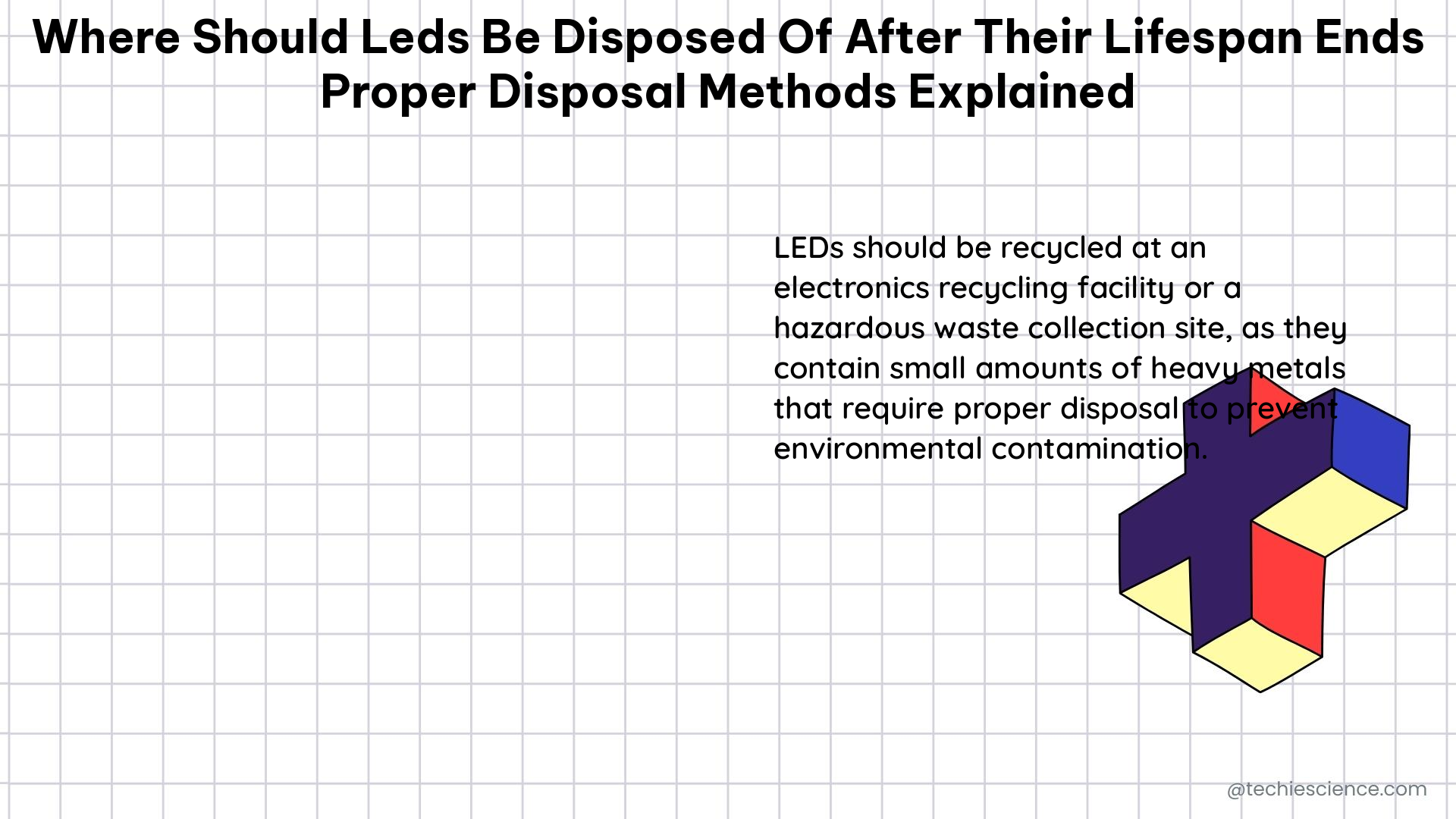According to the Environmental Protection Agency (EPA), less than 25% of all electronic waste is recycled in the United States, with the rest being incinerated or sent to landfills. This is a concerning statistic, as electronics like LEDs (light-emitting diodes) are made up of valuable materials that can be conserved through proper disposal and recycling methods.
Understanding the Composition and Hazards of LEDs
LEDs are a type of electronic waste (e-waste) that contain a variety of materials, including:
- Metals: Copper, gold, silver, and aluminum
- Plastics: Polycarbonate, polymethyl methacrylate (PMMA), and other thermoplastics
- Glass: Used in the LED bulb or package
- Phosphors: Rare earth elements like yttrium, cerium, and terbium
While LEDs are generally considered more environmentally friendly than traditional incandescent bulbs, they still contain hazardous materials that can pose a threat to the environment and human health if not disposed of properly. These include:
- Mercury: Some LEDs may contain small amounts of mercury, which can contaminate soil and water if not properly handled.
- Lead: LEDs can contain lead in the solder used to connect the components.
- Arsenic: Gallium arsenide is a common semiconductor material used in LEDs.
Improper disposal of LEDs can lead to the release of these hazardous substances, which can have severe consequences for the environment and human health.
Proper Disposal Methods for LEDs

When it comes to disposing of LEDs after their lifespan ends, there are several responsible options to consider:
1. Recycling through Certified E-Waste Recyclers
The most recommended method for disposing of LEDs is to recycle them through a certified e-waste recycler. These recyclers are equipped to handle the safe and proper dismantling and processing of electronic waste, ensuring that hazardous materials are contained and valuable resources are recovered.
Look for recyclers with the E-Stewards certification, which ensures they meet the highest standards for environmental responsibility and worker safety. Some examples of e-waste recyclers that accept LEDs include:
- Best Buy’s in-store recycling program
- Staples’ electronics recycling service
- Goodwill’s Reconnect program
Before recycling, it’s important to remove any batteries from the LED device, as they may need to be recycled separately. Additionally, ensure that all personal information is deleted from the device to protect your privacy.
2. Repurposing and Refurbishing
Another option for disposing of LEDs is to repurpose or refurbish them, which can extend the lifespan of the product and reduce the amount of e-waste generated. Companies like iFixit.org promote the right to repair electronics and teach people how to repair their own devices, which can also help extend the lifespan of LEDs and other electronics.
3. Proper Disposal in Hazardous Waste Facilities
If recycling or repurposing is not an option, LEDs should be disposed of in a hazardous waste facility that is equipped to handle the safe disposal of electronic waste. These facilities use specialized processes to contain and properly dispose of the hazardous materials found in LEDs, such as mercury and lead.
It’s important to note that LEDs should never be disposed of in regular household trash or landfills, as this can lead to the release of hazardous substances into the environment.
The Benefits of Recycling LEDs
Recycling LEDs and other electronic waste has significant benefits for the environment and natural resource conservation. According to a study conducted in China, the process of mining copper, gold, and aluminum is 13 times more expensive than the process of recycling them from old electronics.
Additionally, recycling one million laptops saves the energy equivalent of the electricity used by more than 3,500 US homes per year. This highlights the importance of recycling e-waste and the potential benefits it can have on natural resource conservation and energy savings.
Conclusion
When disposing of LEDs after their lifespan ends, it is crucial to consider proper disposal methods to ensure the safety of the environment and human health. Recycling through certified e-waste recyclers, repurposing or refurbishing the product, and proper disposal in hazardous waste facilities are all important steps to take.
By following these responsible disposal methods, we can help reduce the environmental impact of electronic waste, conserve valuable resources, and protect our planet for future generations.
References:
- Waste Incineration Overview – NCBI. (n.d.). Retrieved from https://www.ncbi.nlm.nih.gov/books/NBK233614/
- A review on replacement, disposal methods, in-use lifespan, reuse … (2022, June 20). Retrieved from https://journals.sagepub.com/doi/10.1177/0734242X221105429
- The Lifecycle of Hazardous Waste After Disposal. (2022, July 19). Retrieved from https://cleanmanagement.com/blog/the-lifecycle-of-hazardous-waste-after-disposal/
- What Is the Life Cycle of Trash? – Dumpsters.com. (2023, June 09). Retrieved from https://www.dumpsters.com/blog/trash-life-cycle
- How to Sustainably Dispose of Your Technological Waste. (2021, March 12). Retrieved from https://sustainability.yale.edu/blog/how-sustainably-dispose-your-technological-waste

The lambdageeks.com Core SME Team is a group of experienced subject matter experts from diverse scientific and technical fields including Physics, Chemistry, Technology,Electronics & Electrical Engineering, Automotive, Mechanical Engineering. Our team collaborates to create high-quality, well-researched articles on a wide range of science and technology topics for the lambdageeks.com website.
All Our Senior SME are having more than 7 Years of experience in the respective fields . They are either Working Industry Professionals or assocaited With different Universities. Refer Our Authors Page to get to know About our Core SMEs.